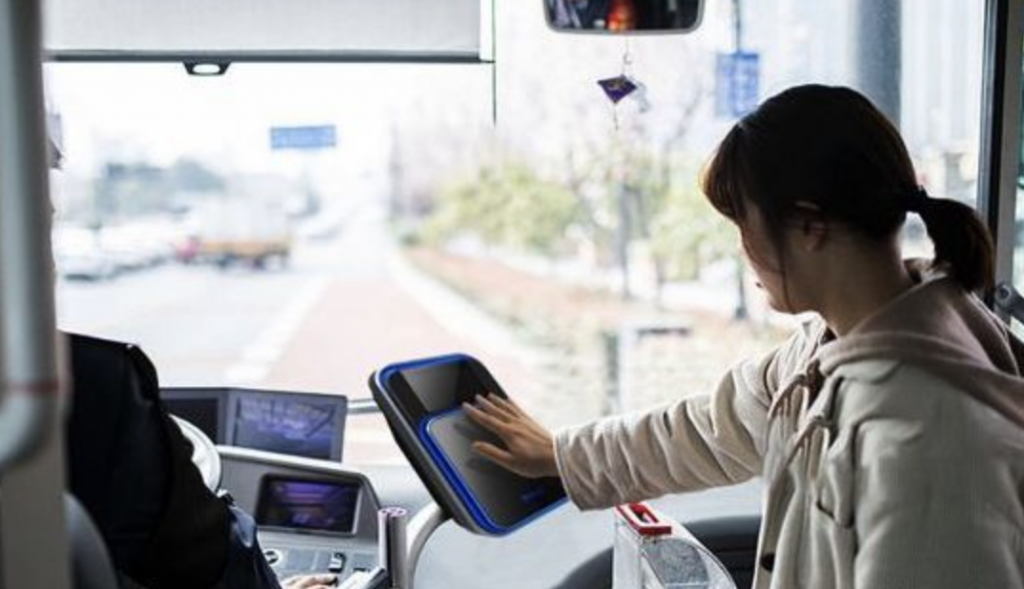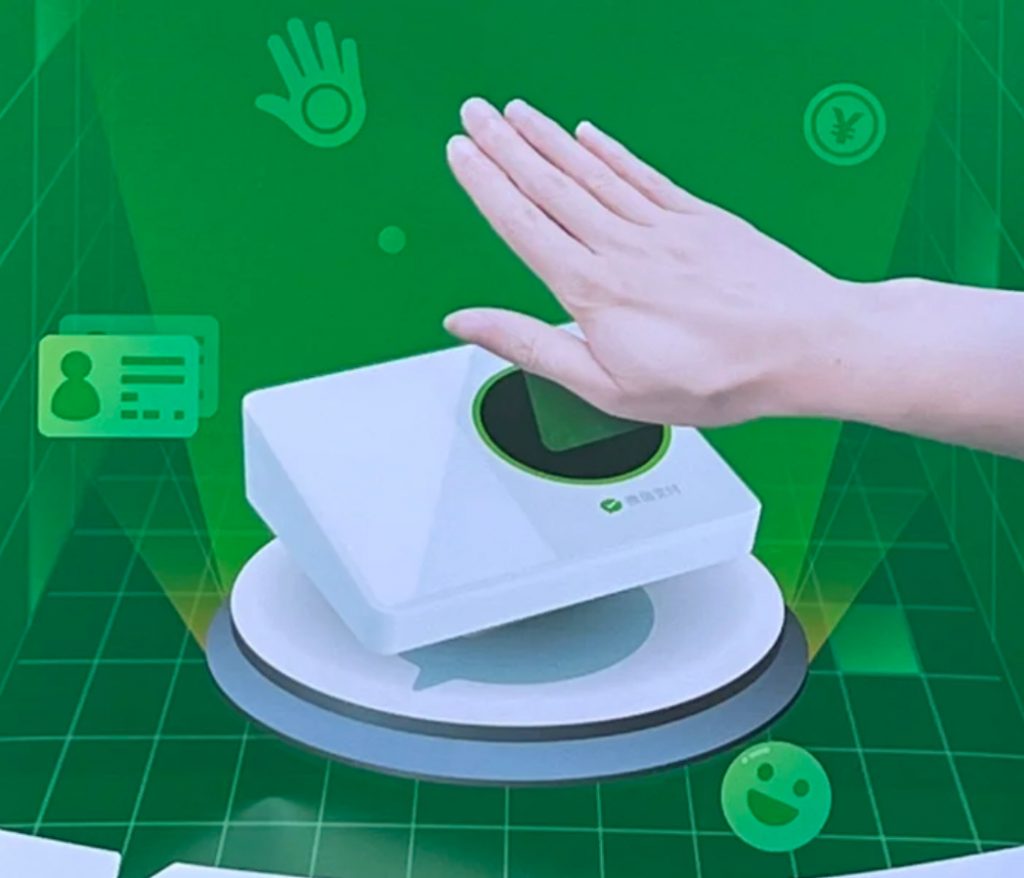- WeChat’s PalmPay offers contactless, secure, and convenient payments through dual authentication. This technology is highly suitable for fast-paced environments.
- Users appreciate the convenience of palm scanning payments but are concerned about privacy, data security, and accidental payments.
- In the competition with other payment methods, Tencent seeks to expand palm print payments to more areas. However, it faces challenges such as device costs and user adaptation.
A year ago, WeChat Pay, developed by the Tencent team, launched the innovative palm payment feature. This technology uses “palm print + palm vein” dual-factor authentication. WeChat Pay aims to provide users with a contactless, highly convenient, and secure payment experience.
In May 2023, WeChat Pay officially launched the palm payment service. Passengers could now scan their hand to pass through the subway gate on the Beijing Daxing Airport Express subway line. In September of the same year, the system was officially launched in over 1,500 7-Eleven stores in Guangdong. Currently, WeChat Pay’s palm payment has been applied in various scenarios such as transportation, fitness, campuses, retail, dining, offices, and shared charging.
Also read: Tencent simplifies WeChat payments for mainland China visitors
Let’s look back at this technology’s performance in the market and user feedback.
The users experience feedback of WeChat’s palm payment
Most user feedback indicates that palm print scanning payments have significantly simplified the payment process. “I find it super convenient because I no longer need to take out my phone, unlock it, find the app, and then make the payment. Now, I just need to show my hand to pay, and I really like this payment method,” said Lucy, a 22-year-old university student from Hangzhou. She is a fan of palm payment and started using this technology as soon as it was launched.
Additionally, user feedback on the palm print scanning feature has effectively addressed various unexpected issues. For example, users often encounter situations where their phone is out of battery, left at home, or even lost. In other scenarios, such as when people are carrying heavy objects, payments can still be made smoothly. By eliminating the need for physical cards or smart devices, palm print payment offers a more convenient solution for busy users.
Some users also find palm print scanning payments more convenient than QR code payments and more accurate than facial recognition payments. In mainland China, payment methods mainly rely on smart devices. Some elderly users report that palm print payments are particularly beneficial. Wangxian, an 84-year-old grandmother from Hangzhou, said, “Using a smartphone for payments is too difficult for me. Palm payment is really easy to use.” She has been using the palm payment 4 months. For elderly people, traditional payment methods can be a challenge. WeChat Pay’s palm print payment option provides a more user-friendly alternative for these individuals.
I find it super convenient because I no longer need to take out my phone, unlock it, find the app, and then make the payment. Now, I just need to show my hand to pay.
Lucy, a 22-year-old university student from Hangzhou

However, feedback from those who do not use palm print payment indicates that most believe the facial recognition payment feature launched by Alipay a few years ago is sufficient to meet current payment needs, rendering palm print payment unnecessary. In their view, facial recognition and palm scanning are largely similar, and choosing one method for payment is adequate.
Some individuals who do not use palm payment express concerns about the privacy and security of biometric information collection. They are worried about the risk of palm data leakage and misuse, demanding higher standards for the secure storage and protection of their biometric information. “I don’t like having my fingerprints and palm prints collected, it’s too personal. If this data gets leaked, wouldn’t I be in danger?” Xiaoming said. She is a 56-year-old retired accountant.
Although palm print payment has been available for over a year, many users still consider it to be in its early stages and remain cautious about its implementation. They express concerns regarding the risks that immature technology might bring, such as payment failures and system malfunctions. Additionally, some users are accustomed to existing payment methods and find it uncomfortable to change their established habits. This resistance to change makes it difficult for them to effectively learn how to use new technology.
Moreover, some users who tried palm print payment shared their feedback after eventually closing their accounts. They expressed concerns that this technology might inadvertently trigger payments. Alfie, a 33-year-old financial worker from Hong Kong, said, “I’m worried that simple, unconscious gestures, like waving, might be misunderstood as payment commands.” He turned off the palm payment feature after using it for a month. This situation raises concerns about the safety of users’ funds, as such unintentional actions could lead to unauthorised transactions. This uncertainty may significantly undermine users’ trust in the system. Ultimately, these users believe that the potential for such errors undermines their overall confidence in the payment method and makes them feel uneasy about their financial security.
I’m worried that simple, unconscious gestures, like waving, might be misunderstood as payment commands
Alfie, a 33-year-old financial worker from Hong Kong
Pop quiz
Which of the following is NOT a concern mentioned by users regarding palm payment?
A. Fear of accidental payments
B. Privacy and security of biometric data
C. Need to change payment habits
D. Simplifies the payment process
(The correct answer is at the bottom of the article)
Tencent and experts statement on palm payment
Tencent stated that palm print payment brings many benefits, not only to individual users and businesses but also to society as a whole. First of all, this technology makes payments simpler, faster, and more efficient. Through palm print scanning, users can dispense with physical cards and passwords, which streamlines the transaction process. As a result, people save time and effort, making their daily lives smoother. Secondly, palm print scanning payments are more secure. Each person’s palm print and vein pattern are unique, which greatly reduces the likelihood of identity theft and fraud. This level of security makes users feel more at ease when making payments.
In addition, this method is more hygienic. Since palm scanning payment is contactless, it helps reduce the spread of bacteria, making it a cleaner option, especially in public places where many people touch the same surfaces. Furthermore, palm scanning payment is user-friendly for people of different ages and physical conditions. Users only need to extend their palm to make an immediate payment.
Palm print recognition systems are favoured for their advantages in privacy protection. Compared to facial recognition, palm print recognition does not involve the same privacy issues. As Xu Liang, an expert in palm print recognition at the Chinese University of Hong Kong’s Shenzhen Institute of Artificial Intelligence and Robotics for Society, states, “Given a palm print image, no one can know whose it is.” He emphasises that palm prints are usually curled in daily life, making it difficult to capture them secretly unless individuals cooperate voluntarily. This feature enhances privacy security.
In addition, he notes that another security advantage of palm print recognition is that, unlike facial recognition, palm print patterns are difficult to replicate after the target’s death. The subcutaneous palm vein pattern can only be captured under infrared light while the subject is alive, which endows the system with inherent anti-counterfeiting capabilities.
Given a palm print image, no one can know whose it is
Xu Xiang, studied palm print recognition at the Chinese University of Hong Kong’s Shenzhen Institute of AI and Robotics for Society
For users who are concerned that palm-scanning payments might leak personal information or have technical vulnerabilities, a supermarket manager in Hangzhou explained, ‘We will strictly encrypt the data for palm-scanning payments, and there will be no risk of leakage.”
We will strictly encrypt the data for palm-scanning payments, and there will be no risk of leakage.
A supermarket manager in Hangzhou
The future of palm payment
In summary, WeChat’s palm payment, with its high security, stability, contactless nature, and convenience, particularly stands out in markets where convenience and security are highly valued. This technology offers users a new payment experience. As palm payment requires biometric recognition, it removes the need for physical cards or devices, especially in fast-paced environments such as retail. However, WeChat’s palm payment also faces challenges that need to be addressed.
The widespread adoption of palm payment will depend on consumer trust and strong data privacy measures, as security and user confidence are crucial for biometrics. With the application of biometric technology in the payment sector, relevant regulations and policies remain incomplete, and further regulatory requirements may arise in the future, creating uncertainty for the development of palm payment.
Palm payment needs to compete with existing methods, including QR code and facial recognition payments. With numerous payment options already available, palm payment must find a way to distinguish itself and gain market competitiveness. Additionally, issues related to equipment costs and updates persist. The relatively high cost of palm payment equipment may impact its adoption among small and medium-sized businesses. Moreover, as technology advances, potential additional costs for equipment upgrades and replacements must also be considered.
Palm print payment technology has been available for over a year and is gradually expanding its application scenarios. Tencent aims for palm print recognition technology to be used not only in payments but also in areas such as access control, attendance, and entry to scenic spots. To achieve wider application, Tencent must consider promoting the equipment, installation costs, and shifts in user habits. These challenges need to be overcome for the successful promotion of palm print payment.
Quiz answer
D. Simplifies the payment process

